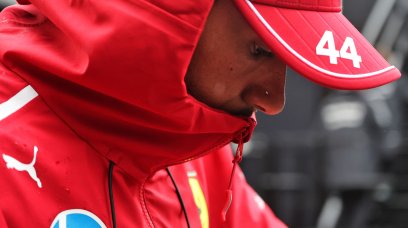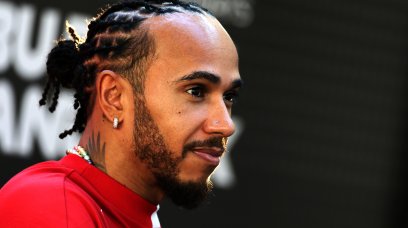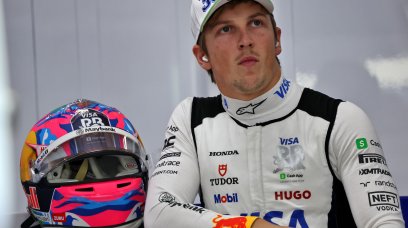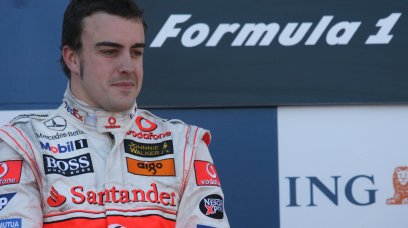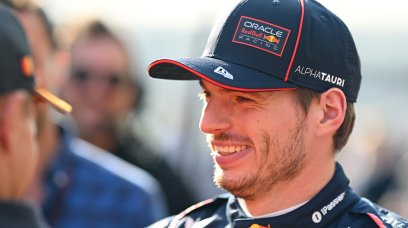In 2021, Red Bull enter a Formula 1 season as strong challengers for the constructor title for the first time in the V6 turbo-hybrid era. However, just prior to that, in the dying days of the V8's, the Austrian outfit firmly established itself as THE team to beat. Both the team and its number one driver, Sebastian Vettel, would win four world championships between the years of 2010 and 2013. It was a thoroughly dominant spell for the team, but the journey to the top was far from easy, simple or cheap. Here then, is the story of how Red Bull rose to the top of motorsport.
Recruiting Adrian Newey
The first big indication that something might just be brewing down in Milton Keynes was the hiring of the brilliant and enigmatic Adrian Newey as chief technical officer. Jaguar had previously attempted to sign the legendary designer before they were eventually sold and rebranded as Red Bull. However, Red Bull managed to succeed where Jaguar didn't, with the promise of complete autonomy to transform the outfit and take them to the very front of the F1 grid. Newey gained fame for his involvement in creating the iconic FW16B, the active suspension monster that carried Nigel Mansell to the 1992 world championship. He then transformed McLaren's fortunes, helping the team capture the constructor and driver world championships in 1998. However, a new management structure that diluted his control at McLaren ultimately drove him out of the team - and into the welcoming arms of Red Bull Racing. He joined the new outfit in 2006 at a time of building for the team. Success did not come overnight, but radical regulation changes for 2009 handed Newey his first opportunity to flex his creative muscles. As we will later showcase, he didn't disappoint.
Well timed regulation changes
The 2009 season was one of upheaval for F1. In a bid to improve racing, aero and downforce were massively reduced, meaning that the 2008 designs would have to be completely overhauled. Into this brave new world stepped the likes of Brawn GP and Red Bull Racing, who aced the regulations, and finished one and two in the constructor standings. The pecking order was profoundly reshaped, as the likes of McLaren and Ferrari struggled, while Red Bull very quickly became a serious title contender. Vettel won the third race of the season during a period of the year that was otherwise dominated by Brawn's Jenson Button. However, as soon as Red Bull developed their own version of the controversial double diffuser, the Austrian outfit became the team to beat. They won a total of six Grand Prix in 2009, including the final three races of the season. It was an ominous sign ahead of 2010, which Red Bull entered in red hot form.
Heavy investment
Suffice to say Red Bull's success after many years of toil wasn't an accident. On the contrary, it was the culmination of years of planning, as well as the company's extraordinary financial commitment to F1. Alongside the signing of Newey, the team also splashed out on a new technology factory in Milton Keynes and secured the futures of many promising drivers by establishing the Red Bull Junior Drivers team - which has produced the likes of Vettel and Max Verstappen. The financial muscle has been provided by Dietrich Mateschitz, an Austrian billionaire who co-founded the Red Bull company. His commitment to motorsport, and sport more generally, quickly established a solid foundation from which the team could build upon. It took them four years to win an F1 Grand Prix, with sister team Toro Rosso even beating them to that particular post. But after that first win in 2009, the team were virtually unstoppable.
World class drivers
It doesn't matter how good the car is, like any piece of fine technology, it needs to be in the hands of those who know how to use it best. It's no coincidence after all that the McLaren MP4-4 and the Ferrari F2004 - two of the most dominant F1 cars of all time, were driven by the likes of Senna, Schumacher and Prost. The same can be said of Red Bull, as its hard to envisage the team winning four straight constructor titles with average drivers. Instead, when the team finally was blessed with a race-winning car, it was being driven by a ferociously quick Aussie, and a future sporting great. Mark Webber and Vettel may have clashed towards the end of their spell together, but in terms of what Red Bull needed at the time, the team could scarcely have found a more suitable partnership. The Australian provided invaluable experience, raw speed, and race IQ. While Sebastian, still young and unrefined, already had the killer instincts of a champion, as well as frightening one lap pace on a Saturday. Vettel was always destined to become the de facto number one driver, but Webber was perceptive enough to understand that he could achieve big wins along the way which helped his team massively in its pursuit of titles.
Christian Horner's leadership
You can't talk about influential Red Bull personnel without mentioning the man who has led the team from the very beginning. What Horner has managed to accomplish is incredibly rare in motorsport circles, as normally, team principals have a shelf life. Horner, by contrast, has remained with the Red Bull family since the team's inception in 2005, guiding them through all of the highs and lows. After Red Bull bought up Jaguar Racing, they appointed Horner (founder of Arden) to head the team, making him the youngest team principal in F1 at the time. After some shaky early moments, Horner would go on to establish himself as one the best operators around. Red Bull gained notoriety for being a well-oiled machine, particularly when it came to race strategy. The 47-year-old's involvement in sourcing Renault - and later Honda - as engine suppliers for the team also shouldn't be overlooked. He has also been assisted by former driver Helmut Marko down the years, who has also played a pivotal role in Red Bull's championship triumphs. The 77-year-old has acted as an advisor to the team since its inception, after overseeing the brand's young driver program previously. Having been heavily involved in the decision-making process since 2005, Marko must also be acknowledged when reflecting upon the secrets to Red Bull's sustained success.
Most read
